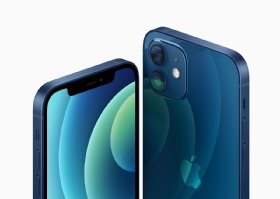unlocked cell phone
What is an unlocked cell phone?
An unlocked cell phone is a cellular telephone that can be used with more than one service provider, allowing users the flexibility and freedom to switch between different networks.
Staying mobile and connected is a precious commodity today, as is having flexibility with mobile devices.
Conversely, a locked phone is essentially bound to a specific carrier, often through a contract or payment plan. While locked phones might come with attractive upfront pricing, they lack the flexibility of their unlocked counterparts.
Benefits of unlocked cell phone
There are many advantages that come with an unlocked phone -- most notably, a heightened sense of flexibility. Unlike their locked counterparts, which are bound to a specific carrier or contract, unlocked phones enable users to switch between service providers at will. Over time, this could lead to significant cost savings, as users can opt for more competitive plans or promotions as they arise.
Moreover, unlocked phones typically come with reduced bloatware and unwanted pre-installed apps. This often results in a cleaner, more user-friendly interface. And for the avid traveler, these devices prove invaluable, as they're compatible with international SIM cards.

Process of unlocking a cell phone
Service providers often lock phones to ensure customer loyalty, especially when devices are sold at subsidized prices. However, with the right knowledge and tools, unlocking is feasible.
Methods range from using unlock codes provided by the carrier to software updates and even third-party services. In essence, the process is as follows:
- Identify the IMEI Number. Before starting the unlocking process, locate the phone's IMEI (International Mobile Equipment Identity) number. This unique identifier can typically be found by dialing *#06# on the phone you want to unlock.
- Contact your carrier. Depending on the carrier, there might be specific eligibility requirements to unlock a phone. For instance, the phone might need to be active on the network for a certain period. Most carriers have a dedicated unlock page or a customer service line to call to start the process.
- Follow carrier-specific instructions. Carriers may have varying procedures for unlocking.
- Using third-party services. If the phone cannot be unlocked through the carrier, there are third-party services that offer unlock codes or remote unlocking. However, be cautious and ensure that the third-party service is reputable to avoid potential scams or damage to the device.
- Testing the unlock. After receiving an unlock code or following the given instructions, it's essential to test the unlock by inserting a SIM card from a different carrier. If the phone connects without issue, then the unlock was successful.
Approach the unlocking process with caution and ensure that legitimate procedures are being followed to avoid any potential issues or breaches of the carrier's terms of service.
There are several things to keep in mind when buying an unlocked phone.
First, checking phone compatibility with the desired network is paramount, as not all phones will work with all carriers. Also, consider aspects like warranty and customer support, which can vary between locked and unlocked devices.
Finally, while the price might be a bit steeper upfront for an unlocked phone, the potential trade-offs in terms of flexibility and freedom can make it a worthy investment.
Explore seven mobile device security best practices for businesses.




